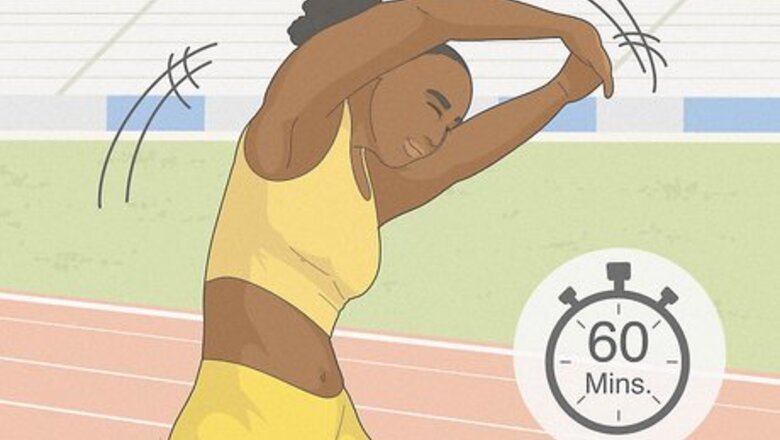
views
- Exercise daily, get 7 hours of sleep nightly, and eat a healthy diet to maintain a healthy blood pressure and stop your veins from getting more noticeable.
- Use coping techniques like yoga, meditation, and journaling to help you deal with stress and, in turn, keep your blood pressure low.
- Talk to your doctor about medical and surgical procedures to get rid of your forehead veins entirely, including electrosurgery, laser therapy, or sclerotherapy.
Minimizing Forehead Veins at Home
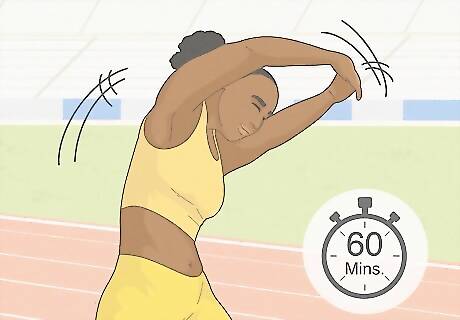
Exercise every day for at least 60 minutes. It’s important to stay active when you want to minimize the veins in your forehead and prevent them from getting any worse. Regular exercise strengthens your veins and increases your body’s circulation, which makes your veins less visible. Plan a daily exercise routine for yourself; you might do a full 60-minute workout or break it up into smaller exercise breaks throughout the day. Keep in mind that once a forehead vein becomes visible or starts bulging, there’s no way to make it go away entirely without treatment from your doctor. Natural home remedies can prevent your veins from getting more visible but won’t get rid of them.
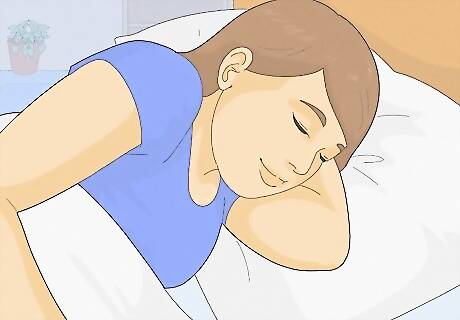
Get plenty of sleep every night. Sleep helps your body regulate its blood pressure—so the more sleep you get, the less strain you'll put on your blood vessels and forehead veins. Aim to get at least 7 hours of sleep each night (or 8 to 9 hours, when possible). Adequate sleep ensures that you stay rested and your blood pressure stays within normal limits. To get the best sleep possible, try going to bed and getting up in the morning at the same time each day as much as you can. Additionally, ensure your bedroom is quiet, dark, and at a cool, comfortable temperature by the time you’re ready for sleep.
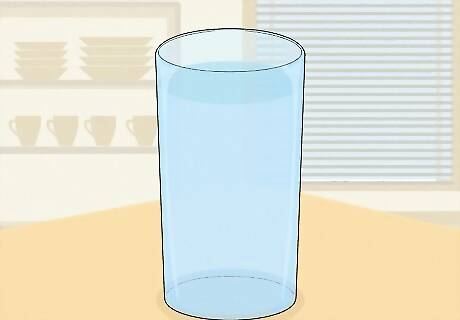
Drink water throughout the day at hourly intervals. Hypertension (high blood pressure) makes your veins stand out and has a negative impact on your overall health. Drinking water is super important because it dilutes your blood, making it less salty or sugary—and high levels of sodium or sugar in your blood can lead to hypertension. Therefore, make a point to drink plenty of water every day. Generally, men need about 15.5 cups (3.7 liters) of water per day, while women need about 11.5 cups (2.7 liters) water per day.
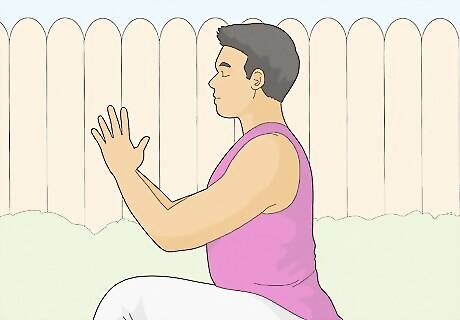
Develop techniques to cope with everyday stress. Stress is a common cause of increased blood pressure, which can make your forehead's veins stand out. So, to prevent those veins from getting worse, work on reducing the stress in your life as much as possible. Start practicing different techniques to lower your stress, like meditation, yoga, and journaling. Yoga and meditation are both relaxing activities that can help you clear your mind, while journaling is a healing activity that may help you process your worries in a healthy way. Simple things like exercise, sleep, and eating well also do wonders for stress, so be sure to take care of yourself and see to your basic needs.
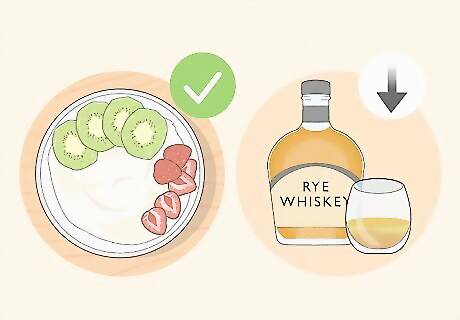
Eat a nutritious diet with minimal alcohol. Alcohol and caffeine may cause the capillaries (tiny blood vessels) in your face to fill with blood, therefore making the veins in your forehead more noticeable. Additionally, processed foods with high sugar and sodium levels can weaken your blood vessels, making your veins more visible. To minimize forehead veins, stick to a healthy diet and cut out alcohol, caffeine, and processed foods as much as possible. Add plenty of vitamin C to your diet as well. Vitamin C (found in citrus, broccoli, bell peppers, cabbage, and strawberries) is thought to be a natural remedy for bulging veins, as it keeps blood vessels healthy and prevents further damage.
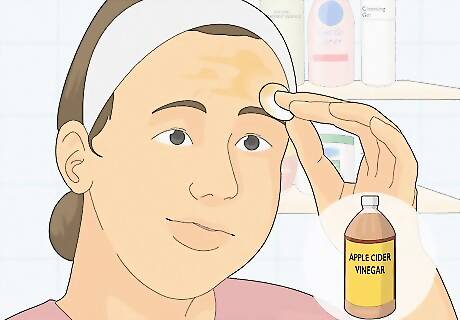
Apply apple cider vinegar to your forehead. Apple cider vinegar acts as a tightening agent on your skin. When applied directly to your forehead in the spots where your veins are sticking out, it can pull the skin there tighter, reducing redness and inflammation. While apple cider vinegar isn’t an official remedy for forehead veins, it’s thought to make spider veins less noticeable for some people. Aloe vera gel applied directly to your forehead is also thought to reduce any redness caused by the bulging vein, though it may also dry out your skin. Herbal supplements like witch hazel are also thought to be helpful against visible spider veins, so try applying witch hazel astringent to your forehead.
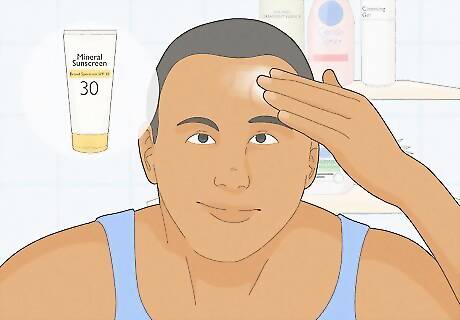
Use sunscreen daily before going outside. Damage from the sun’s UV rays can make your veins more visible, which is why sunscreen is so important. Put on your sunscreen anytime you’re about to go outside, and remember to apply it on cloudy days, too—UV rays can still reach you during the day, even if it’s not sunny out! Stay away from tanning beds, as they can also cause skin damage that makes your veins more visible. Try applying a cold compress (like an ice pack or bag of frozen veggies, for example) after getting sun or heat exposure. Cold may help reduce the visibility of burst blood vessels in your forehead.

Gently wash your face without rubbing or scrubbing. Washing your face is an important part of skincare, but scrubbing your skin too hard may cause the tiny, delicate blood vessels in your face to expand and break, making spider-like veins more visible. Whenever you go to wash your face, do it gently and avoid any harsh rubbing or scrubbing motions, particularly around your forehead, if you’re worried about spider veins. Use warm water to wash your face, as hot water may also cause the blood vessels in your face to break and make your veins more visible.
How to Treat Forehead Veins Medically & Surgically
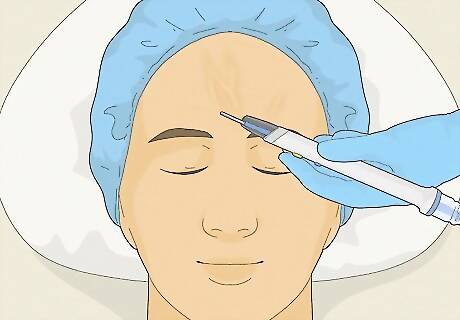
Electrosurgery Electrosurgery is a minimally invasive procedure that involves destroying problematic blood vessels. In the procedure, doctors run an electric current through a hand needle and use that to eliminate blood vessels, which in turn reduces the visibility of your veins. While it’s not invasive and is very quick to perform, this treatment can also be painful. Electrocautery is a similar procedure that your doctor might alternatively use to eliminate forehead veins; the main difference is that, with electrocautery, the electric current used to destroy blood vessels never enters your body.
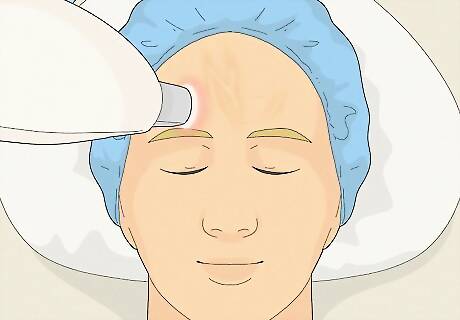
Laser therapy Laser therapy (also called laser surgery) is another less-invasive option that involves using bursts of laser light to close the veins that are showing up on your forehead. After the procedure, the problematic veins will eventually fade and even disappear entirely. However, keep in mind that laser therapy may also damage your skin, making it sensitive during recovery. Alternatively, ask your doctor about Intense Pulsed Light (IPL) therapy. In IPL therapy, doctors use special lights to close veins that dig into your skin's deeper layers without damaging the top layer.
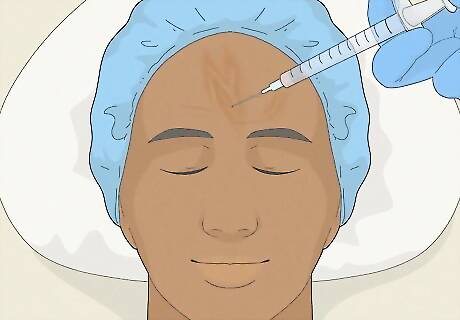
Sclerotherapy Sclerotherapy involves injecting a chemical or saltwater into your visible forehead vein. The solution causes it to shrink, close, and get resorbed into your body. However, sclerotherapy is risky, so it’s important to consult your doctor before opting to try it; complications from this type of treatment can be quite dangerous.
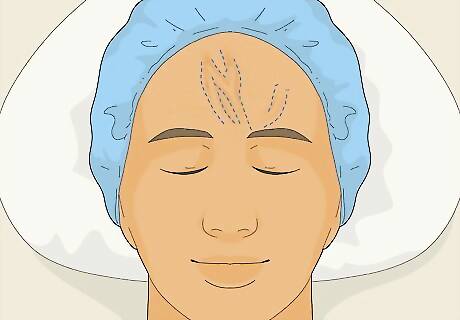
Surgery As a last resort, your doctor may have to remove or close off the facial vein surgically—particularly if it’s too large to treat using one of the above less-invasive methods. This kind of surgery is called endovenous ablation of varicose veins, and it involves using heat from radio frequency to burn and close veins, causing blood flow to be redirected to other healthy veins instead. Keep in mind that, because this is surgery, there may be indentations where the surgery took place on your forehead afterward. Ultimately, your doctor will decide if surgery is necessary or if a less-invasive procedure might be better for you, so be sure to discuss your options with them thoroughly.
What causes forehead veins?
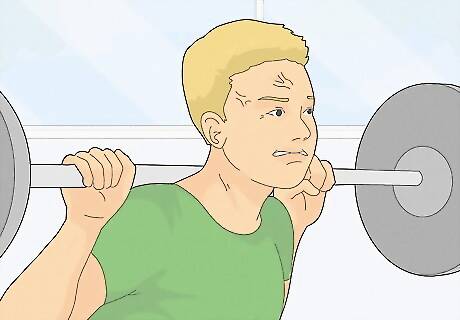
Pressure When there’s a sudden increase in pressure on your neck and head, it may cause the veins in your forehead to stand out. Anything from a hearty laugh to a sneeze can cause extra pressure on your head, so it’s not always avoidable! Additionally, tension headaches (which are very common) often make your forehead veins bulge because they’re caused by tightness in your scalp or jaw muscles. Factors that increase pressure include: Laughing Screaming Crying Vomiting Sneezing Exercising (particularly lifting weights) Headaches
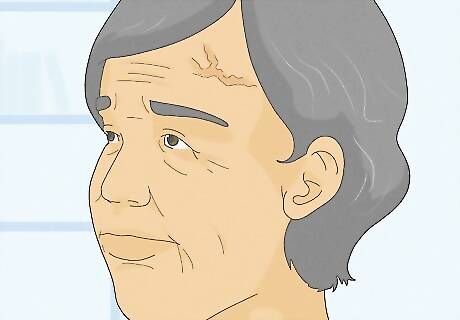
Aging and genetics Your blood vessels naturally weaken over time—it’s a part of getting older. You may simply notice that your forehead veins get more visible as you get older and your skin gets thinner, making it easier to see the veins underneath. It’s also possible that you’re genetically predisposed to getting spider veins; if you have other family members with spider veins, you’re also more likely to get them. Another common cause of visible forehead veins is lower body weight. If you’re underweight, you likely don’t have much body fat, which means your skin is tighter, and it’s easier to see your veins as a result.
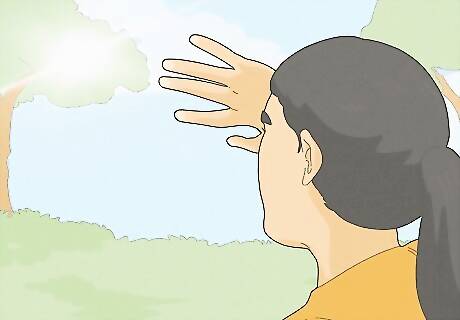
Sun exposure The sun’s powerful UV rays are capable of enlarging your blood vessels, which causes them to bulge and simultaneously weakens the surrounding tissue. Therefore, if you’re out in the sun for too long without protection, it may cause the veins on your forehead to get bigger and stand out—and prevent them from shrinking back to their normal size over time. Spider veins on your forehead may look red, purple, or blue. In addition to your forehead, facial veins most commonly show up on your face and nose.
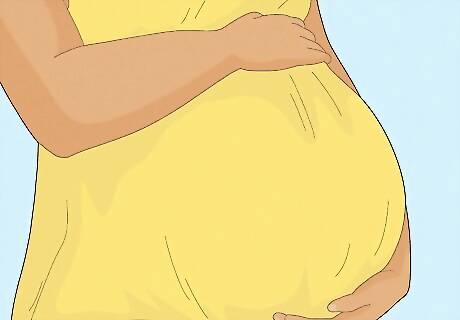
Pregnancy When you become pregnant, your body undergoes a number of hormonal changes as it starts producing more estrogen and progesterone—and higher levels of those hormones may widen and weaken your veins. Your body also increases blood flow while pregnant, further enlarging your veins. As a result, blood might accumulate, making it look like your forehead veins are more prominent. The good news is that once your pregnancy is over, your hormone levels return to normal—and so do your veins. If pregnancy hormones are causing your noticeable veins, they’ll usually fade within 12 weeks after giving birth.
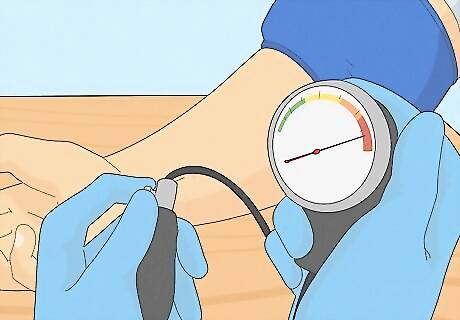
High blood pressure High blood pressure (hypertension) increases the amount of blood flow to your head, which in turn may cause your forehead veins to become more visible or bulge out. While a visible forehead vein by itself isn’t usually a problem, you may also experience chest pain if your visible vein is caused by high blood pressure. If you notice any unusual or painful symptoms besides the bulging vein, get medical help immediately.

Vein dysfunction If you notice a forehead vein bulging out, it’s possible that you have an arteriovenous fistula—which is simply an incorrect connection between an artery and a vein. Blood is supposed to flow from arteries into capillaries and finally into veins. However, when you have an arteriovenous fistula, the artery and vein are directly connected, which may lead to swelling in your vein. Keep in mind that arteriovenous fistulas are quite rare. So, if you notice a swollen vein in your forehead, don’t jump to conclusions! If you’re worried, a doctor can definitively tell you what’s going on. Small arteriovenous fistulas often don’t come with any symptoms and aren’t much of a problem; your doctor might simply monitor them over time. Larger arteriovenous fistulas often require medical attention. Other symptoms include fatigue, swelling in your arms or legs, and decreased blood pressure.
When to See a Doctor

Visit your doctor if you have symptoms like dizziness or headaches. Facial veins are super common and, in many cases, don’t require medical treatment. If you see a vein getting more noticeable on your forehead, it’s probably not a cause for concern unless you’re experiencing other symptoms in the same area. Dizziness, headaches, head pain, and vision issues are all symptoms that likely require medical attention from your doctor. If you have a prominent vein in your forehead but don’t have any other symptoms, don’t feel obligated to get the vein fixed or removed. As long as you’re healthy, that’s what really matters! However, if you don’t like how your facial vein looks and want it to go away, talk to your doctor about whether treatment or surgery might be right for you. Ultimately, it’s your decision whether you want to pursue medical treatment for your forehead veins or simply prevent them from getting larger with natural home remedies.



















Comments
0 comment